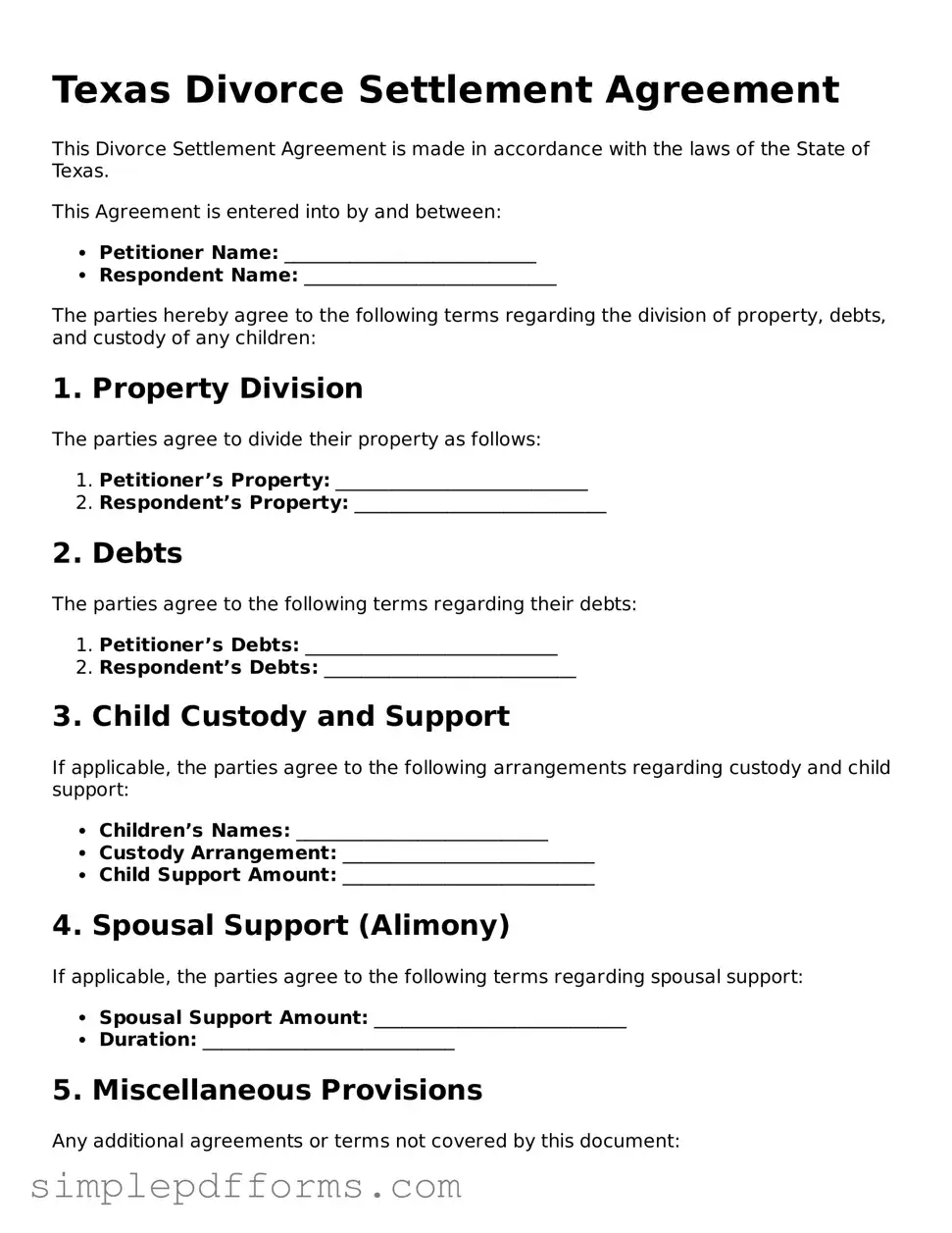Texas Divorce Settlement Agreement
This Divorce Settlement Agreement is made in accordance with the laws of the State of Texas.
This Agreement is entered into by and between:
- Petitioner Name: ___________________________
- Respondent Name: ___________________________
The parties hereby agree to the following terms regarding the division of property, debts, and custody of any children:
1. Property Division
The parties agree to divide their property as follows:
- Petitioner’s Property: ___________________________
- Respondent’s Property: ___________________________
2. Debts
The parties agree to the following terms regarding their debts:
- Petitioner’s Debts: ___________________________
- Respondent’s Debts: ___________________________
3. Child Custody and Support
If applicable, the parties agree to the following arrangements regarding custody and child support:
- Children’s Names: ___________________________
- Custody Arrangement: ___________________________
- Child Support Amount: ___________________________
4. Spousal Support (Alimony)
If applicable, the parties agree to the following terms regarding spousal support:
- Spousal Support Amount: ___________________________
- Duration: ___________________________
5. Miscellaneous Provisions
Any additional agreements or terms not covered by this document:
- _________________________________________________________________
- _________________________________________________________________
By signing below, both parties indicate their agreement to the terms outlined in this Divorce Settlement Agreement.
_____________________________ Petitioner Signature Date: ____________
_____________________________ Respondent Signature Date: ____________
This document is intended for informational purposes only and should be reviewed with legal counsel before use.
